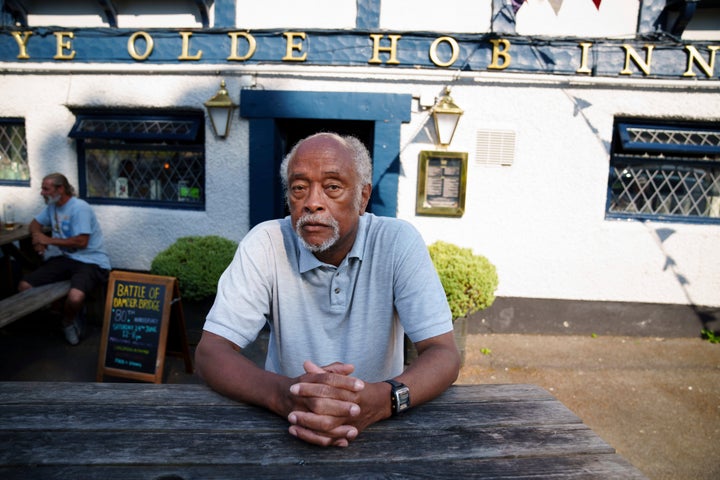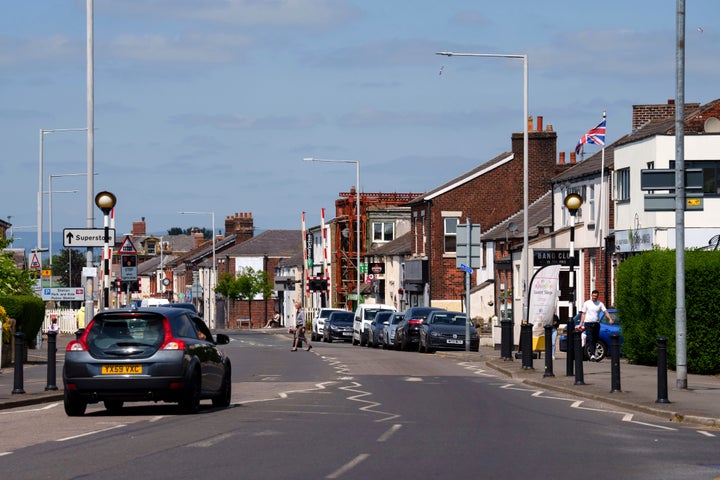Josh Payne, PA Chief Reporter in St John's, Canada
Sat, 24 June 2023
A team of investigators has boarded the main support ship of the Titan submersible after it returned to the harbour following the deep-sea vessel’s fatal implosion.
Flags on board the Polar Prince were at half-mast as it arrived at the port in St John’s in Newfoundland on Saturday, after four passengers and the pilot of Titan were killed in the incident near the wreckage of the Titanic.
Police and safety investigators could be seen on board the vessel after the Transportation Safety Board (TSB) of Canada announced it would be the subject of an investigation.

The Polar Prince docked in St John’s harbour on Saturday (Jordan Pettitt/PA)
TSB officials could be seen boarding the Polar Prince shortly after it docked.
The Associated Press reported that the TSB said the US Coast Guard will lead the investigation after they declared the loss of Titan to be a “major marine casualty”.
Rib boats could be seen towing what appeared to be the Titan submersible’s launch platform away from the Polar Prince and further along the port.
Canadian Coast Guard (CCG) boats had already started to return to St John’s harbour on Friday as the recovery operation began to wind down.
British adventurer Hamish Harding and father and son Shahzada and Suleman Dawood were killed on board the Titan submersible, alongside the chief executive of the company responsible for the vessel, Stockton Rush, and French national Paul-Henri Nargeolet.
In a statement issued before ships began to return to the port, the CCG said the search and rescue operation had concluded.
The CCG said one of its vessels would remain on the scene and would “provide assistance and support to the recovery and salvage operations as requested by Maritime Rescue Coordination Centre Boston”.

Police could be seen on board the Polar Prince shortly after it docked (Jordan Pettitt/PA)
The TSB said a team of investigators had been deployed to St John’s to “gather information, conduct interviews and assess the occurrence”.
In its own statement, the safety body said the investigation would be carried out “in accordance with the Canadian Transportation Accident Investigation and Safety Board Act and international agreements”.
The TSB will not determine civil or criminal liability and conducts investigations for “the advancement of transportation safety”.
A number of tributes have been paid to those who died on the deep-sea vessel, including from Mr Harding’s sons, who issued statements on Saturday describing him as a “loving father, family man and a determined and tireless businessman”.
The investigation comes after the BBC reported that emails from Mr Rush showed he had dismissed safety concerns over the Titan submersible.
In the exchanges with deep-sea exploration specialist Rob McCallum, OceanGate’s chief executive said he was “tired of industry players who try to use a safety argument to stop innovation”.

The Titan submersible catastrophically imploded close to the wreckage of the Titanic (OceanGate Expeditions/PA)
The Titan submersible lost contact with the tour operator an hour and 45 minutes into the two-hour descent to the wreckage, with the vessel reported missing eight hours after communication was lost.
In the days that followed the gone-missing report, the US Coast Guard said the vessel had a depleting oxygen supply that was expected to run out on Thursday.
A report from The Wall Street Journal said the US navy had detected a sound in the search area for the submersible on Sunday that was consistent with an implosion.
The Associated Press, citing a senior military official, reported that the navy passed on the information to the Coast Guard, which continued its search because the data was not considered by the navy to be definitive.
'The Titanic sub tragedy was a major disaster waiting to happen'
Letter writer
Letter writer
Bournemouth Echo UK
Fri, 23 June 2023

Rescue teams are searching for the missing submersible Titan before its oxygen supply runs out (American Photo Archive/Alamy/PA)
WORLD news media for four days is locked on the missing Titanic submarine in the North Atlantic.
I worked myself on the ship-board side of a dive support vessel in the 1970s.
Highly trained professional deep sea divers spend thirty days at a time in saturation chambers.
Twelve hours shifts operating on the sea floor from a diving bell.
Then 12 hours in saturation chambers, 20 feet by seven feet diameter, back on the dive support ship.
During all this time breathing a mixture of oxygen and helium to match diving depth pressures.
You need nerves of steel.
Very level temperament.
Huge endurance.
Not a place by any means for amateurs.
On the missing Titanic sub operated by OceanGate Expeditions, as far as we know the vessel had very little certification, being operated as an experimental project.
An absolute horror story.
A major disaster waiting to happen.
On one count no-one should be diving on what is an ocean grave.
It should be left in peace in memory of all who died so terribly 15th April 1912. Not turned into a commercial tourist enterprise.
On a second count – astonishing that any paying passengers, so called adventurers, should be taken as tourists on the dives.
And on a third count – hundreds died when a refugee boat sank off Greece last week, with reports of children stuck in holds.
So terrible but that passes out of the news cycle within 48-hours.
The Titanic sub is a terrible tragedy. For all of us our worst nightmare.
But then hugely expensive adventurism when we have so much real need to deal with.
JEFF WILLIAMS
Jubilee Road, Poole
Fri, 23 June 2023

Rescue teams are searching for the missing submersible Titan before its oxygen supply runs out (American Photo Archive/Alamy/PA)
WORLD news media for four days is locked on the missing Titanic submarine in the North Atlantic.
I worked myself on the ship-board side of a dive support vessel in the 1970s.
Highly trained professional deep sea divers spend thirty days at a time in saturation chambers.
Twelve hours shifts operating on the sea floor from a diving bell.
Then 12 hours in saturation chambers, 20 feet by seven feet diameter, back on the dive support ship.
During all this time breathing a mixture of oxygen and helium to match diving depth pressures.
You need nerves of steel.
Very level temperament.
Huge endurance.
Not a place by any means for amateurs.
On the missing Titanic sub operated by OceanGate Expeditions, as far as we know the vessel had very little certification, being operated as an experimental project.
An absolute horror story.
A major disaster waiting to happen.
On one count no-one should be diving on what is an ocean grave.
It should be left in peace in memory of all who died so terribly 15th April 1912. Not turned into a commercial tourist enterprise.
On a second count – astonishing that any paying passengers, so called adventurers, should be taken as tourists on the dives.
And on a third count – hundreds died when a refugee boat sank off Greece last week, with reports of children stuck in holds.
So terrible but that passes out of the news cycle within 48-hours.
The Titanic sub is a terrible tragedy. For all of us our worst nightmare.
But then hugely expensive adventurism when we have so much real need to deal with.
JEFF WILLIAMS
Jubilee Road, Poole








 Firefighters take a reading after dousing the exploded batteries on Saturday, June 24, 2023, in New York. - Theodore Parisienne/New York Daily News/TNS
Firefighters take a reading after dousing the exploded batteries on Saturday, June 24, 2023, in New York. - Theodore Parisienne/New York Daily News/TNS



